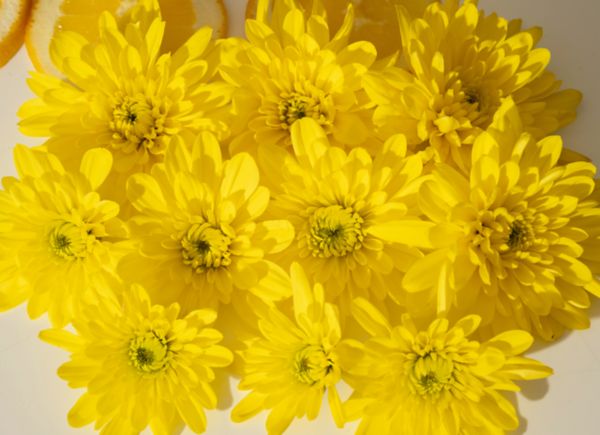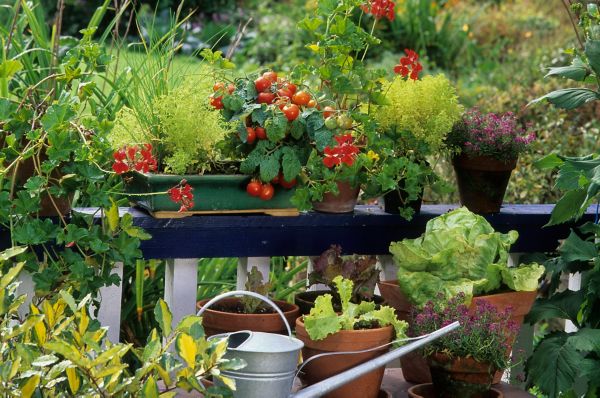How to Grow Strawberries
Authored by Leah Chester-Davis
Strawberries can be eaten fresh. They can be pureed into smoothies, baked into pies, used for jams and jellies, or tossed onto salads. They also can be frozen to enjoy the just-picked flavor year-round.
The biggest star of the spring garden is the strawberry. These sweet, heart-shaped gems of goodness are chock-full of vitamins, especially vitamin C, minerals, and antioxidants that help protect against cancer and increase HDL or good cholesterol.
In numerous states, strawberry festivals herald the arrival of spring and celebrate strawberries grown locally. What that means is that strawberries are adaptable to many growing conditions. They are great for home gardeners and will grow in containers, raised beds and garden beds. Even with limited space such as a patio you can still enjoy growing and harvesting berries.
About strawberry
| Botanical name: | Fragaria x ananassa |
| Common name: | Strawberry |
| Plant type: | Can be grown as an annual or perennial |
| Size: | Low-growing plant; fruit size depends on variety |
| Sun exposure: | Full sun |
| Soil type: | Well-drained, sandy loam |
| Soil pH: | 5.8 to 6.5 |
| Hardiness zones: | Numerous zones; your zone may dictate variety and when to plant |
| Average first frost: | Varies by region |
| Average last frost: | Varies by region |
| Container friendly: | Yes |
| Beginner friendly: | Yes |
Growing
Strawberries grow best in full sun and in fertile, well-drained, sandy loam that contains plenty of organic material and a pH of 5.8 to 6.5. Berries are shallow-rooted plants and are susceptible to fungal diseases in areas where soil is heavy and does not drain well.
Amend heavy clay soils with plenty of organic material such as leaves, decomposed pine bark mulch or sawdust, or chopped straw to help facilitate drainage. Rotted manure mixed into the soil helps provide nutrient-rich soil.
Work your ground thoroughly, preferably in the fall, to make sure the soil is loose and friable, and giving any organic material a chance to break down. It is helpful to get a soil test and to follow its recommendations before planting. If your soil contains plenty of organic material, you may not need to apply fertilizer.
There are numerous varieties and they typically fall within three types. When selecting plants for your home garden, you are likely to come across these terms:
- Day neutral refers to plants that produce fruit throughout most of the growing season.
- Ever-bearing types produce two crops, one in the spring or early summer and another in early fall. They may not produce well in hot Southern climates, except for elevated locations.
- June-bearing are types that produce a large yield for a shorter period, typically in June or July in the Midwest and Northern climates, but this certainly depends on your region of the country. In warmer, Southern climates they typically produce in May.
If you purchase plants from a nearby garden center or nursery, select plants with vigorous growth and dark green leaves that are not discolored or dead. Keep them moist until planting and plant soon after purchase. Plant them at the same depth the plant was in the container.
Planting
Allow about 1-square foot of garden space per strawberry plant. Plant two to three plants per person unless you want to grow enough to preserve. About a quart of berries can be harvested from one plant, so plan accordingly. Purchase disease-free, certified plants from a reliable nursery in your region. If ordering plants, select varieties adapted to your region.
Extend the season with a mix of early, midseason, and late varieties. Early varieties bloom earlier, which makes them susceptible to frost damage if the temperatures warm in the spring and then turn cold again. Check recommendations for your region on the best time to plant your berry plants as this varies across the country. For coastal regions, for example, the best time may be anytime from October to March. In other areas, it may be during March or April or even into May and June in the upper Midwest, depending on whether you are planting dormant transplants or potted transplants.
If planting in rows, mound the soil 6- to 9-inches high and 15-inches wide. This helps facilitate good drainage and makes it easier to harvest. Space plants about 18- to 24-inches apart. Either dig a trench or individual holes for individual plants. Space rows about 3- to 4-feet apart. This allows room for runners to form and spread.
Take care not to plant the crowns too shallow where they lose water and die. The crown is the point where the stem and the roots merge. Also avoid planting them too deeply so that the leaves may not emerge from the soil. The midpoint of the crown needs to be level with the soil. Make sure the roots are extending straight into the soil and fully below the soil line, and any growth points are above the soil line.
After planting, lightly firm the soil around the plant with your hands. Water thoroughly. Plants need about an inch of water each week. Water early in the day and at the base of the plant, allowing leaves to dry during the warmth of the day. This helps reduce chance of disease. Mulch helps manage weeds and helps keep moisture levels and soil temperatures even. Use weed-free straw or pine needles around the plants.
Spring temperatures can be fickle, quite warm on some days and then dipping below freezing. Strawberry plants may begin blooming on those warm spring days. If they are filled with blooms, and the weather forecast predicts temperatures below freezing, you may want to cover your plants to help protect them. An old cloth, blanket, or some type of row cover tented over the berries, or a 2-to 3-inch layer of straw gently placed over the plants may help. To tent berries and keep any row cover off them, use garden stakes every couple of feet so they will provide support for the fabric or row cover. Keep it from blowing out of place by placing bricks, stones, or other heavy object at its edges.
Strawberries can also be planted in raised beds or in containers, and even tucked into landscape beds. When planting in containers, use a potting mix for vegetables and herbs. Do not put soil from garden beds into containers as it will be heavy and may not drain adequately.
When growing in containers or tucking into landscape beds or borders, select day-neutral types, which will put out fewer runners and will be easier to keep beds looking attractive.
Fertilizing
- Soil that contains rich, organic material likely will not need fertilizer added. A soil test will indicate whether nutrients are needed and advice on application rates. This is best done before planting.
Controlling Pests, Diseases, and Other Problems
Strawberries are susceptible to anthracnose, botrytis, and various root and crown rots. Remove any diseased berries or plants and dispose of out of the garden. Employ best cultural practices such as spacing plants so they have room to grow with good air circulation. Plant in good, healthy, organically rich soil with good drainage. Water at the base of the plant early in the day to allow time for leaves and fruit to dry in the warmth of the day.
If needed, organic and synthetic fungicides for strawberries are available; follow label directions.
- Aphids, mites, sap beetles, and spotted wing drosophila are among the insects that can be a problem. Follow good cultural practices and remove ripe and overripe fruit in a timely manner. If any organic or synthetic insecticides are applied, follow label directions carefully and avoid applying when bees are foraging.
- Birds may be the biggest pests in your strawberry patch. The most effective way to prevent loss of your crop is to cover your strawberry plantings with bird netting. It can be purchased near the garden section of your local store. Clemson Extension recommends placing 6- to 8-inch stakes every 2 feet around the planting to anchor the net. Angle the stakes away from the rows so that the net can be hooked over the stakes. Angling the stakes helps keep the net close to the ground, preventing the birds from getting under it.
Harvesting and Storing
After the berries bloom, it will be about 30 days before strawberries will be ready to harvest. Pick berries by the stem when they are ripe with a rich red color. Leave any unripe berries to continue to ripen.
Harvest berries every other day.
Storing
Fresh berries are best when eaten 1 to 3 days after harvest. Store in the refrigerator in a shallow container that has ventilation or holes and cover with plastic wrap. Do not wash prior to storing.
There are several methods for freezing berries. Michigan State University Extension provides guidelines on the syrup pack, sugar pack, unsweetened pack, and the pectin pack method.
Another method for freezing is to remove the caps of berries, wash and drain until thoroughly dry. Lay berries, separated, on parchment paper on a cookie sheet and freeze. When frozen, place the berries in a ziptop freezer bag. It’s easy to remove a few berries as needed.
Harvest berries every other day.
Expert Tips
- The better your soil preparation, the better your chances for a healthy crop of strawberries.
- Buy plants only from reputable garden centers or nurseries and employ good cultural practices.
- Numerous varieties are available. Check with your county Extension office or local garden center about the best choices for your region.
Frequently asked questions
The garden center employee advised me to remove the blooms from my first planting of strawberries. Is this necessary?
Removing blooms from any plant is hard, especially for beginning gardeners. However, by removing the first set of flower buds and runners, it allows the plant to become more established with stronger roots and will likely result in larger, healthier fruit.
What is the best mulch to use around my berries?
Straw is best. It helps cut down on weeds, which is important in reducing various pests and in preventing competition for your strawberry plants.





